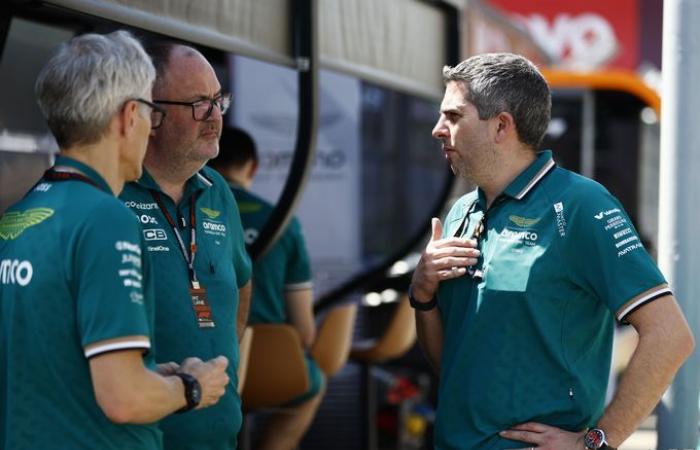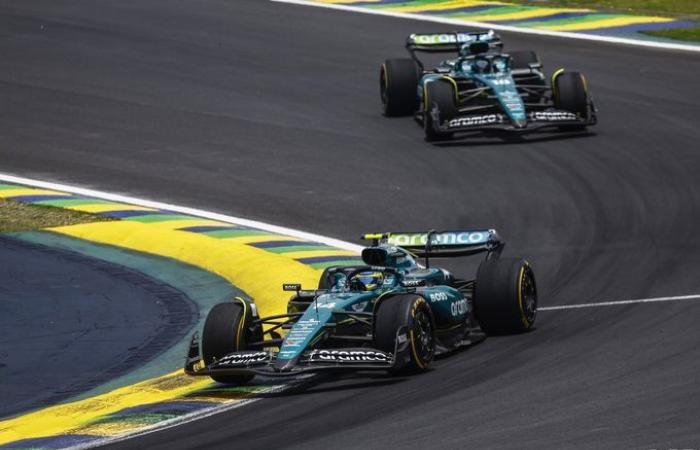By Fernando Alonso's own admission, Aston Martin F1 was certainly the slowest team in the Brazilian rain during the last Grand Prix.
Why this real fiasco, which placed even the Aston Martin F1s behind the Saubers in race pace? Why do wet conditions further worsen the competitiveness of the green car, which is already not great in the dry?
The settings and the flat bottom are apparently to blame (as in the case of Lewis Hamilton). After the two accidents of Lance Stroll and Fernando Alonso in qualifying, Aston Martin F1 had to abandon its Japanese flat bottom concept, to return to that of the Hungaroring (more suited to fast circuits). At the same time, the entire AMR24 was unbalanced, leading in particular to locking of the rear tires and strong bounces.
Even without the accidents of the Aston Martin F1 drivers, the team intended to continue its evaluation of the two types of flat bottom. As a sign that she got lost in her development in this second half of the season…
Tom McCullough, performance director, sums up this hesitation between pieces.
“We have two main flat bottom philosophies this year, and we have developed both depending on the tracks. The flat bottom brought to Austin was intended to combine the best of both worlds, with an experimental intention to prepare for next year. »
But Austin's flat bottom didn't live up to expectations at all, leading Aston to shelve him for Interlagos.
Fernando Alonso also suffered from particularly serious rebounds during the Brazilian Grand Prix; without the dedication of the mechanics who repaired his car after his accident that morning in qualifying, the Spaniard says he would have retired.
But this flat bottom change was also responsible for Fernando Alonso's rebounds. Because it was necessary to respect the technical regulations of the FIA and therefore change the flat bottom without having the possibility of adjusting the mechanical configuration around it, because the suspension settings are completely fixed in parc ferme.
Consequently, with an unsuitable flat bottom, and a very bumpy Interlagos circuit despite its resurfacing, Fernando Alonso's car was unbalanced and very uncomfortable.
“It was clear that both drivers were battling an incredibly difficult car to drive in Sunday's race,” confirms team principal Mike Krack.
“Our post-weekend analysis highlighted several factors that explain this. Following the qualifying accidents of both our cars, we had to replace many components with a different specification due to availability at the end of a triple event. This is permitted by the Sprint event regulations, and you declare your shortages and replacement options to the FIA before the event. »
“But you are not allowed to change the mechanical settings of the cars. This meant that we could neither check nor adjust the settings of the cars, which negatively affected aerodynamic behavior and performance. »
“Add to that the wet and tricky conditions and an incredibly bumpy track, and you begin to understand that both drivers were in extremely unfavorable conditions. Both cars were particularly prone to wheel locks, and the data shows that this is what caused the problems for Lance and Fernando. »
How to explain the decline of Aston Martin F1?
Tom McCullough is responsible for performance, mainly the area which was lacking this year… How can we explain the setbacks of Aston Martin F1, which still managed to save its 5th place in the constructors' standings?
“Performance is relative. We haven't made the progress we hoped for this year. »
“This year we have not made the progress we wanted to make, and the relative development with the [autres équipes] was not strong enough. This is why we are having a little more difficulty scoring points on all types of circuits. »
Like last year, Aston Martin F1 therefore missed its development during the year. And missed it even more than in 2023! Will team boss Mike Krack admit it?
“We had our most difficult season because we didn't meet our own expectations. We aimed to develop a car that could continuously compete in the top four, but we failed. We must accept it, learn from it, understand our mistakes and determine how to move forward. »
Mike Krack offers an interesting explanation: Aston Martin F1 would have brought too many developments and too soon.
“Perhaps we were in too much of a hurry to bring new things to the track. Sometimes we were in too much of a hurry. There is a lesson to be learned: quality over quantity. »
“We must accept the situation, learn from it as much as possible, understand the mistakes we made and find the best way to move forward. »
“There's a lot going on in the background that convinces me we're going in the right direction, hence my confidence. »
“We are in a much better position than last year because we have learned a lot, both from our successes and from our mistakes. We are more thorough and ask more questions to get a better match between our expectations and our achievements. »
On paper, it is true that Mike Krack has reason to be optimistic: Aston Martin F1 will soon welcome a new simulator, a new wind tunnel and… Adrian Newey!







